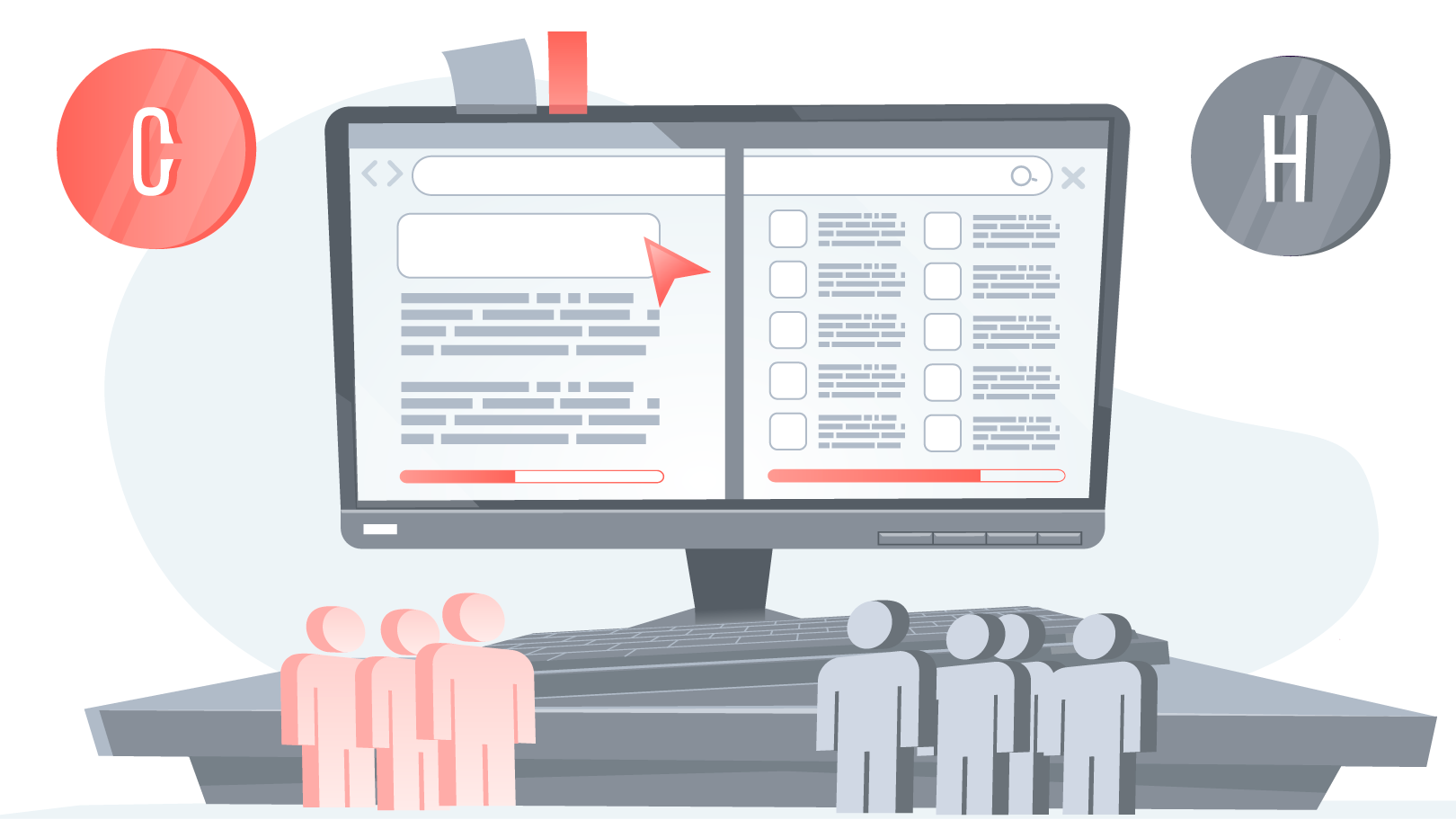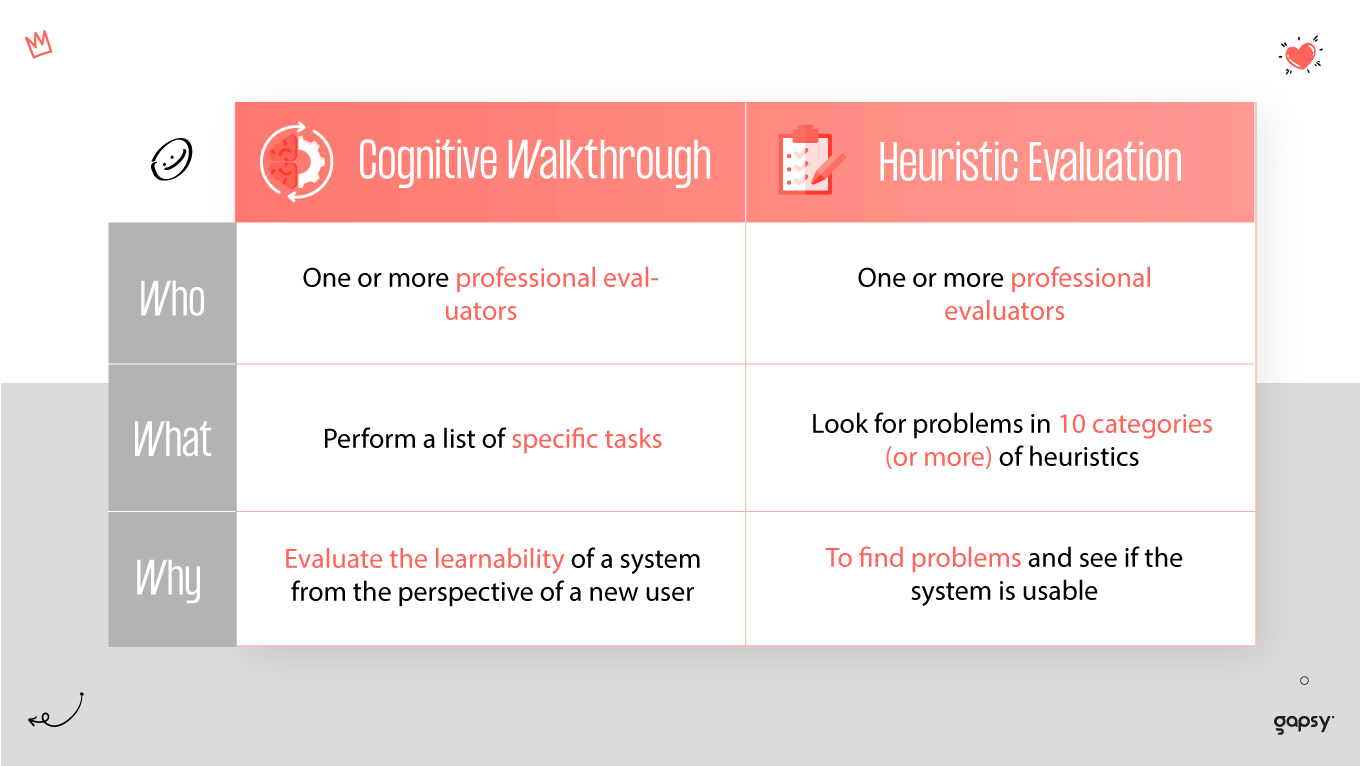Two prominent methods for evaluating the usability of digital products are cognitive walkthrough and heuristic evaluation. Each technique offers unique insights into how users interact with a system, yet they approach the assessment from different angles. Cognitive walkthrough focuses on the user’s journey through a task, highlighting issues related to learnability and ease of use. In contrast, heuristic evaluation relies on expert reviewers to identify usability problems based on established principles.
Today, let’s delve into the nuances of these two methods, comparing their strengths, limitations, and the contexts in which each is most effective. Enter the world of cognitive walkthrough vs. heuristic evaluation with Gapsy!










